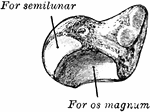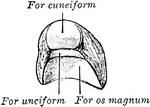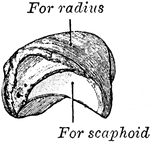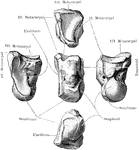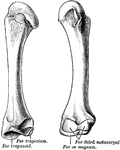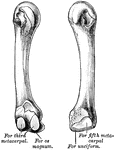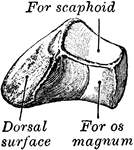Clipart tagged: ‘magnum’

Elephant Foot
"Right fore foot of Indian Elephant. U, ulna; R, radius; c, cunelform; l, lunar; sc, scaphold; u, unciform;…

Palaeotherium magnum
"The Palaeotherium magnum was of the size of a horse, but thicker and more clumsy; its head…
